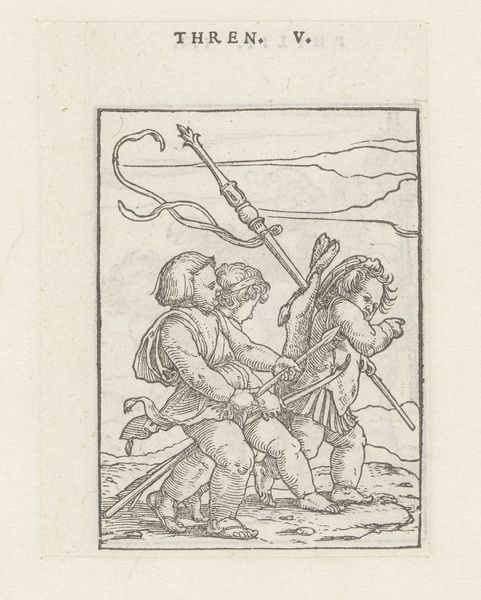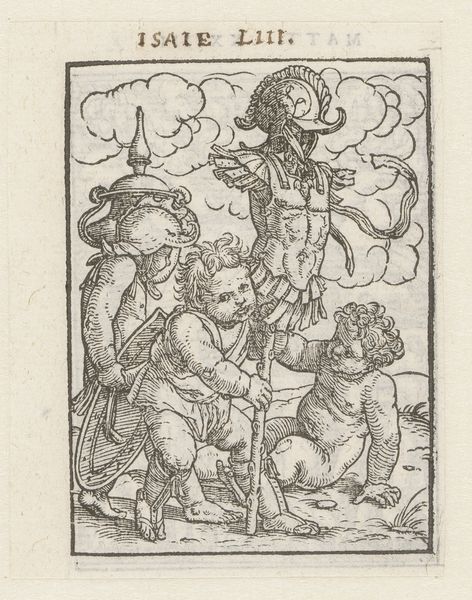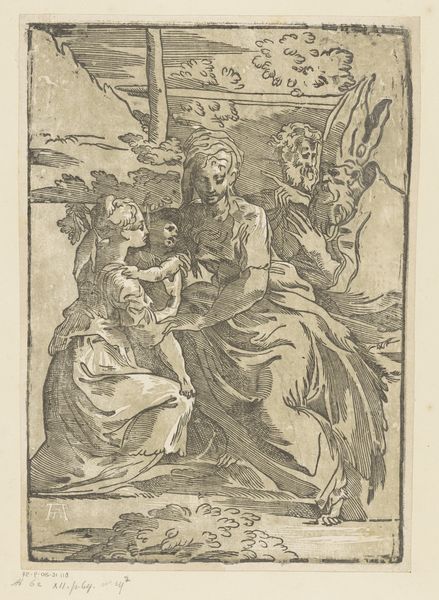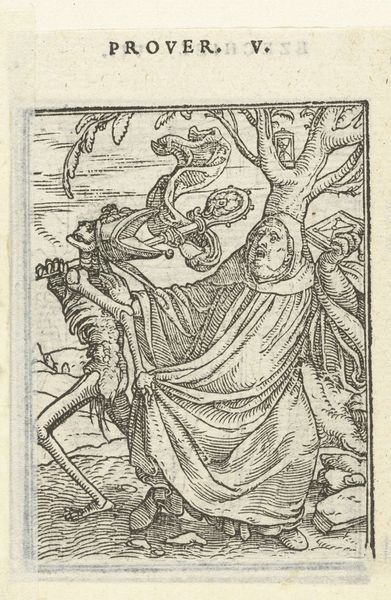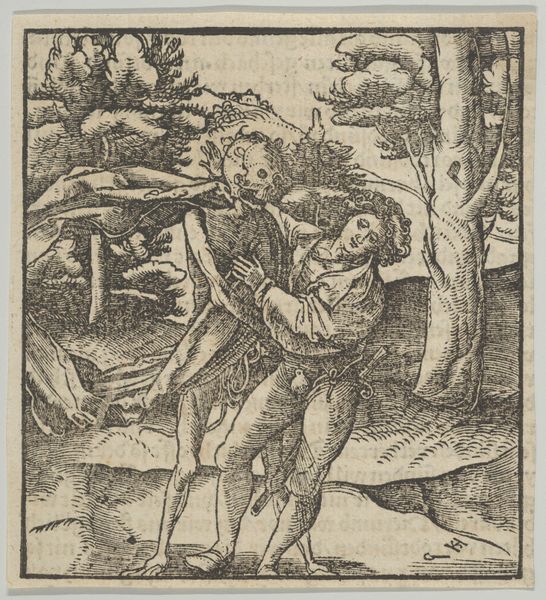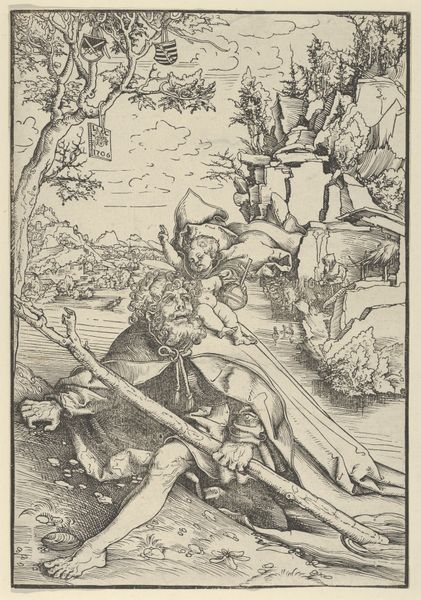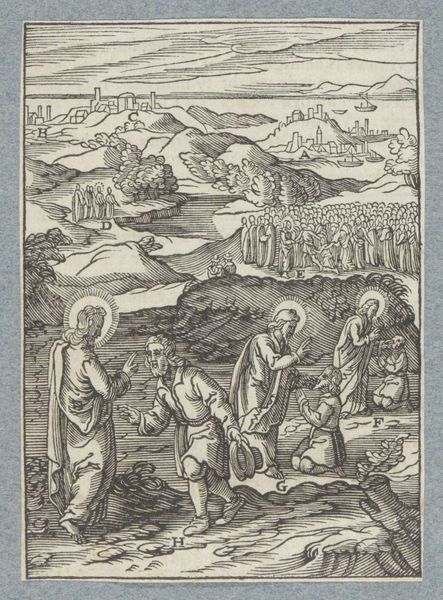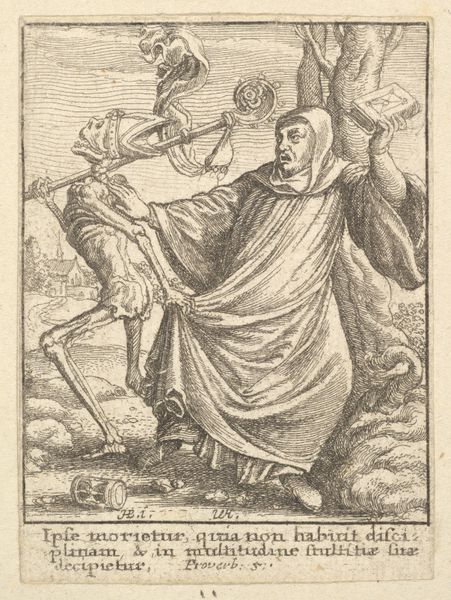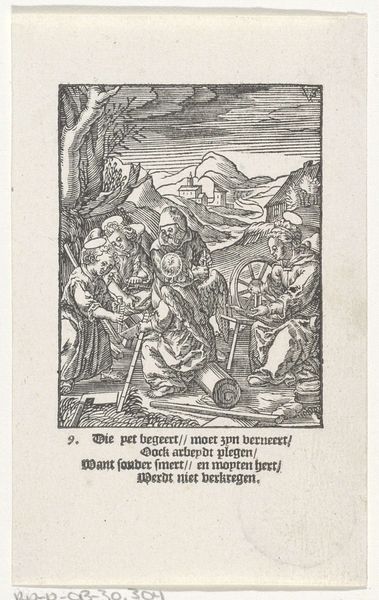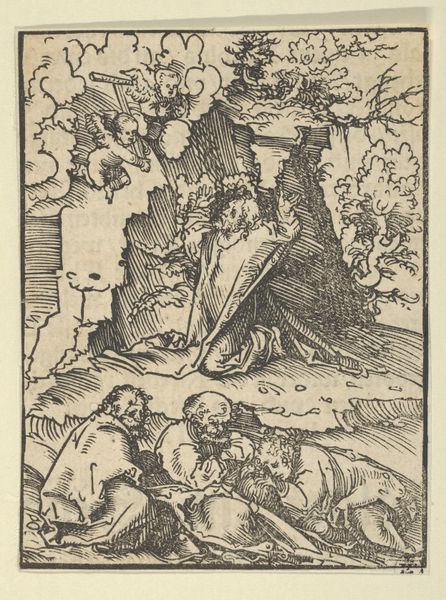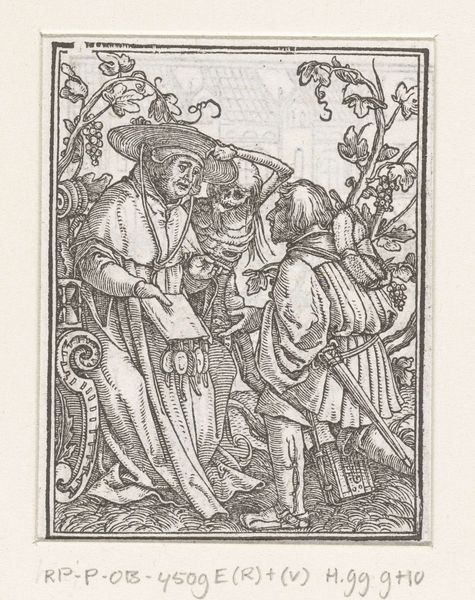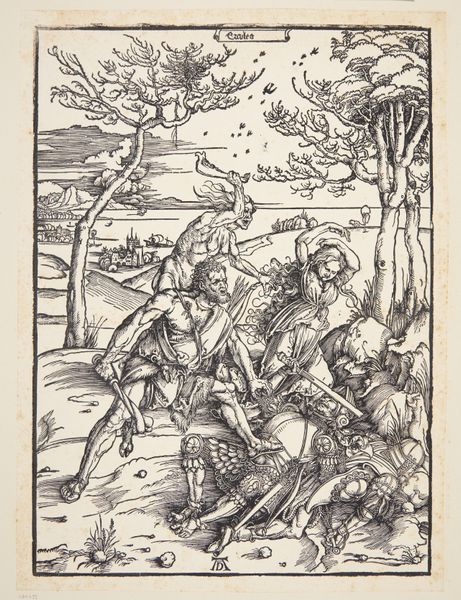
print, woodcut
#
allegory
#
narrative-art
# print
#
death
#
figuration
#
woodcut
#
northern-renaissance
Dimensions: height 65 mm, width 50 mm
Copyright: Rijks Museum: Open Domain
Curator: Looking at Hans Holbein the Younger's "Gek en de Dood," created in 1547, one is immediately struck by the macabre humor. Death is almost playfully chasing after this fool. Editor: Yes, the frantic energy is captivating. It's all contained within this small woodcut. The immediacy and affordability of the print would've brought this commentary to a wider audience, wouldn't it? A sort of democratized morbidity. Curator: Precisely! Holbein’s work, particularly his prints, speak volumes about the accessibility and consumption of art in the 16th century. The choice of woodcut as a medium isn't merely aesthetic; it's a statement about the material conditions of art production. Consider the labor involved, the process of carving— Editor: But also consider what the imagery represents for people during the period. Holbein’s dance of death series engaged in the early modern public's fascination with morality and the brevity of life, especially following devastating plagues. It provided a stark commentary on societal roles and institutions. Curator: Absolutely, the societal aspect informs the creation and reception, directly impacting the selection of materials and production processes. The availability of paper, the skill of the woodcutter – all shape the final product and its message. We mustn't isolate the artistic intention from the modes of making, right? Editor: The "memento mori" tradition is cleverly subverted here. Death isn't a grim reaper but almost a jester himself, armed with instruments of, well, musical morbidity, and we see a certain level of artistry in this medium that speaks volumes to the societal perspectives on wealth, labor, and religious undertones during Holbein's era. It gives some of us an almost dark, existential humor! Curator: It certainly prompts us to reflect on our own values. Seeing this artwork prompts a sense of shared humanity across time through both materiality and imagery. Editor: It serves as a poignant reminder of our shared mortality and how it shapes not just our beliefs, but the art we create, disseminate, and ultimately remember.
Comments
No comments
Be the first to comment and join the conversation on the ultimate creative platform.
